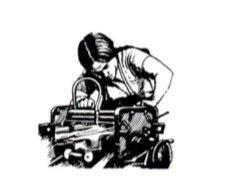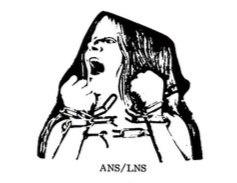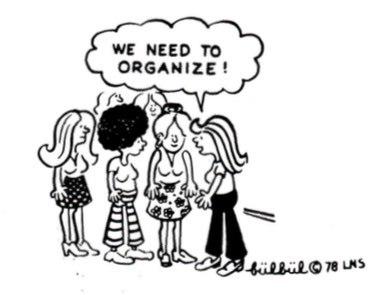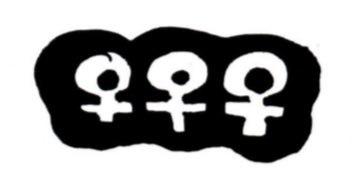RESOURCES ON MIGRANT WOMEN
outwork
Outwork: An Alternate Mode of Employment,
Centre for Urban Research and Action
124 Napier Street
Fitzroy 3065,
Australia.
November 1978. 58 pages.
Conducted by two students of the Centre for Urban Research and Action, this is a study of the conditions and perceptions of outworkers in the clothing industry in Australia, particularly Melbourne. It looks at the structure of the clothing industry. Federal laws affecting outworking, and gives a detailed description and analysis of the conditions of work, attitudes and situations of outworkers, based on interviews. The conclusions are very clear: "Outworkers play an important role in the clothing industry. They are used to minimize production costs, to accommodate seasonal peaks in production and to permit increased production without incurring the costs associated with employing indoor workers, thus providing employers with a great deal of flexibility. . . By using outworkers and not declaring them as employees, employers' overhead costs such as purchase and maintenance of machinery, and cleaning, insurance, payroll tax, workers compensation, administrative paperwork, strict observance of awards, holidays etc. can be avoided. In short the workforce is flexible, cheap, vulnerable and unorganized". . . 'The majority of outworkers are women, mostly migrant women, who, as a result of cultural expectations, are faced with primary responsibility in the areas of child rearing and home making yet are forced to work by economic necessity." An excellent study, with positive recommendations at the end.
"Outworkers and Homeworkers",
Working Women's Centre
Discussion Paper No. 17,1977.
Majorca Building, 1st Floor,
258 Flinders Lane
Melbourne 3000, Victoria,
Australia.
The Hidden Army
Simon Crine
Low Pay Unit
9 Poland Street
London W1V 3DG
England
November 1979, £0.90.
The Hidden Army is a study of homeworking in Great Britain. It is extremely comprehensive, covering what has been done and published about homeworking over the past 70 years (since it first came to be recognised as the scandalous "sweated labour"), and giving an analysis of the current situation in Britain. It also gives proposals about what can be done, through wages councils, employment protection, health and safety protection, and keeping records.
This is Low Pay Pamphlet No. 11, in a series of excellent publications by the Low Pay Unit which is an independent body whose function is to draw attention to the extent of low pay and its concentration in the wages council sector. The Unit proposes measures to tackle low earnings and acts as a watch dog on Government, employers and trade unions to see how their actions affect the well-being of the low paid. Other publications in the series of pamphlet includes: Sweated Labour: A Study of Homework, by Marie Brown, The Brush Off, a study of the contract cleaning industry, by Jill Sullivan, From Rags to Rags, low pay in the clothing industry, by Steve Winyard, and The Part-Time Trap, by Jennifer Hurstfield.
The Low Pay Unit also produces the Low Pay Bulletin which appears every two months (No. 14, April 1977 is entitled "Below par: women and work", and No. 20, April 1978, 'The Wages of Fear, a 1978 report on homeworking"), and a series of occasional papers. Although very firmly not a feminist organisation as such, the LPU provides important studies and analyses of industries and employment where female labour is concentrated.
regular publications
Migration Today No. 24 (1979)
World Council of Churches
150 route de Ferney
1211 Geneva 20, Switzerland.
Produced jointly with the Women's Desk, this issue of this excellent publication of the Migration Desk is devoted entirely to women migrants. It not only covers the situation of migrant women in many different parts of the world — Asian women in Britain, Italian and Spanish women in Switzerland, Italian women in Australia, Indian women in Kuwait, Turkish women in Norway, Filipina women in Italy, migrant women in Canada and South Africa — but also gives good examples of positive action and organisation by migrant women. Articles are well written, not too long, and laid out so that they are easy to read. An important publication, touching on many different aspects of the problem. Highly recommended. Free of charge. English, French and Spanish.
The migration Desk of the World Council of Churches also issues Dossiers on migration. Their most recent one, Dossier No. 6, on Filipina Workers, is reviewed elsewhere in this Bulletin. Other Dossiers published are: No. 1 "Migrant Workers in the Middle East", No. 2 "Migrant Workers in the Dominican Republic", No. 3 "Migrant Workers in South Africa", No. 4 "Migrant Workers and Expatriates, Middle East", and No. 5 "IRIAN JAYA, Colonisation, Migration and Refugees". All available free of charge from the above address.
Migrants Formation No. 32-33, March 1979
CNDP documentation Migrants
4 rue de Stockholm
75008 Paris
France
A collection of articles on the situation of different nationality groups of migrant women in France. Mainly descriptive, giving details of what the situation is like and how many women of a particular nationality come to France. Concentrates particularly on the possibilities of education for immigrant women, and gives space to first-hand accounts from immigrant women on their experiences. It also contains an extremely comprehensive bibliography on migrant women in France, including material concerned with social action for migrant women, interviews, groups of migrant women and their actions, and statistical works. Below are some references taken from this bibliography.
Dossier femmes immigrees
Objectif-immigres No. 20 (fev. mars 1976)
51 rue Vanderkindere
1180 Brussels, Belgium
A series of articles on migrant women: their family problems, health, contraception, work, lodging and education.
Femmes et immigrees: I'insertion des femmes immigrees en France
Taboada-Leonetti and F. Levi
Documentation FranpaiseNo. 4 (1979),
Paris, France
Final report of a study carried out at the request of the Ministry of Labour, Department of population and migration.
Immigration Newsletter National Lawyers'Guild Immigration Project 712 South Grand View St. Los Angeles, Ca. 90057 USA

Excellent resource on the legal and political problems of immigrants in the USA. Vol. 8 No. 4 (July/Aug 1979) contains material on recent immigration cases, deportation proceedings and regulation changes. Also includes items on Indochinese refugees and Nicaraguan nationals. (Information from Human Rights Internet Newsletter Vol. 5 No. 2 and 3,1979, USA).

special issues
Multiculturalism
Faculty of Education,
University of Toronto,
371 BloorSt.West,
Toronto, Ontario M5S 2R7
Canada
"Immigrant Women" is the title of Vol, II No. 4 (1979) of this quarterly magazine published by the Guidance Centre of the Education Faculty at Toronto University in cooperation with the Multicultural Development Branch, Ministry of Culture and Recreation of Ontario. It is an excellent production on the very varied aspects of immigrant women's situations in Canada, drawing for the most part on first-hand interviews with Portuguese, East Indian, Chinese, Greek, St. Lucia and Hungarian women. The main emphasis is on labour force participation and work within the family, looking at how ethnic communities build up and what this implies for women immigrants. Special emphasis is laid on programs particularly designed for immigrant women, looking at what is practically available in the different regions of Canada, and listing centres and organisations of immigrant women. An extensive annotated resource guide is given, which we highly recommend, and reproduce here just some of the references listed:
Bibliography of Centre's Resources on Immigrant Women in Canada and their Countries of Origin, 1978
Cross-Cultural Communication Centre
1991 Dufferin Street, Toronto, Ont. M6E 3P9.
A list of material available at the Centre: 11 pages refer to immigrants; provides a useful introduction to the literature.
Options: A Sourcebook on Employment and education for women,
Ontario Ministry of Labour, Women's Bureau
400 University Avenue, Toronto M7A IT7.
A general guidebook to issues important to women in the labour force and in education with some special attention to immigrant women. Resources, addresses, government programs and offices, educational opportunities , sources of funding .
Anthropological Quarterly 49 :1 (1976)
Special issue: Women and Migration.
Originally presented at a special session of a professional meeting, these papers cover diverse experiences and locales: Jamaican migrants in London, West Indian women in France, Polish immigrant women, Dominican women, Bolivian and Spanish Galician migrants.
"Cleaner's Action " by July White,
in Women and Work
Secretary of State, Women's Programs,
Ottawa K1A 0M5 , Ont.
This is a booklet prepared as part of the resource kit Women and Work available free from the above address. Description of development of a group of women in the Portuguese community in Toronto including history of some labour disputes involving the group. Also in the kit and prepared by Julie White, "Household Workers Association", March 1978. Describes formation , goals, and activities of this association that works for better working conditions for domestic workers.
impetus - The Black Woman.
c/o C. Morris
2985 MacKay Avenue, No. 108,
Windsor, Ontario.
The proceedings of the Fourth National Congress of Black Women of Canada - a bilingual publication containing precis of papers presented on multicultural Black women, immigration and human rights, economics, early childhood education .
Services for Immigrant Women
Women's Research Centre
No. 201 ,517 Broadway
Vancouver V5T 1X4.
1977. Can $ 2.00

Report and evaluation of four workshops conducted in 1977, for people working directly with immigrant women to discuss the problems of women and of the social agency workers. Extensive reports include case histories, texts of speakers' remarks. Bibliography.
Des luttM et des rires de femmes
CP. 6 8 7 , Succ. " N "
Montreal H 2 X 3N4
Canada
A French language bimonthly review from Quebec feminists. As the title suggests (struggles and laughter of women) it contains a mixture of serious articles, photos, revues, plays, news etc. Focus each time on, e.g. age, violence, religion, and four main rubrics: abortion contraception, work , child care and sexuality. A good publication. 2:1 (1978) contains a dossier on women immigrants with overviews on the situation of Greek, Chilean, Italian , and Haitian women. It also covers t he abduction of Dalila Maschino and the situation of domestics in Canada. Can $ 1 .00.
Second Class, Working Class
People's Translation Service
4228 Telegraph Avenue
Oakland, Ca. 94609
USA
November 1979, U S $ 3 . 00
Described as "an international women's reader", this is an anthology of articles from around the world on women. It is divided into three sections: women changing the face of the left - political parties and unions, which includes articles from France, Italy, Hungary, Yugoslavia and Colombia; strikes and resistance, including articles on Palestine, Cuba, Angola, Algeria, Iran, Bolivia, Denmark, Holland and Belgium; and finally a section entitled "the other side of unemployment: prostitution , immigration, and reproductive rights " , which looks at Asian women in different European countries, contraception in Ireland, abortion law in Italy and prostitution in France and Poland.
This is a really excellent production by the women working at the People's Translation Service which produces the monthly Newsfront International presenting a selection of articles from the alternative press around the world . We highly recommend Second Class, Working Class as an invaluable resource and study document, as well as presenting a realistic picture of women in their struggles around the world right now.

Le Magazine OVO
CP. 1431
Succursale " A "
Montreal, Quebec H3C 2Z9
Canada
A "trimestrial magazine dedicated to the promotion of photography as a means of communication and social change. Organised around a theme, it presents a collection of articles by different authors, as well as pages of beautifully printed photographs. This magazine is the production of a mixed group which has a clear non-sexist approach to its subjects. A beautiful resource.
No. 27/28 (1978) centres on Immigration; No. 35/36 (1979) focuses on Children.
Rouge
c/o Women's Warehouse,
Ultimo Road No. 9
Haymarket, Sydney, N.S.W.
Australia
An Australian feminist newspaper appearing monthly, and covering a broad range of issues, including articles on migrant women. No. 3 (September 1979) for instance includes an article on outworkers, and one on migrant women and health, showing how the problems they face in terms of language and culture actively work against their getting adequate health care.
Women in Struggle
Box 50
Rising Free Bookshop
182 Upper Street,
London N1,
England.
An excellent collection of articles put together by the Poster Film Collective based on a three week event in Feb-March 1978 under the title "Women in Struggle". All the contributions come from women or women's groups which organize independently but at the same time situate themselves firmly within the context of the broader struggle for people's liberation. Articles from: Zimbabwe, South Africa, Eritrea, Latin America, Chile, The Philippines, China, Malaya, Ireland, India, and also dealing with the Britain-Africa-Caribbean triangle, the Grunwick women's strike, Malaysian Nurses in the UK, and several London women's groups. It is well produced and provides an excellent resource on women in liberation struggles. No price or date mentioned.
books and articles
But I wouldn't want my wife to work here . ..
A study of migrant women in Melbourne industry
Centre for Urban Research and Action
124 Napier Street, Fitzroy
Victoria, Australia
1975.
A report on the situation of migrant women working in factories in Melbourne, Australia. Gives socio-hlstorical perspective on mass migration to Australia during the middle part of the century, and details results of interviews with migrant women (their background, work situation, childcare facilities, language problems, participation and attitudes to unions), employers and unions. It is described as a data report (and indeed includes extensive tables) forming part of a project to research the situation of migrant women and to attempt to develop strategies which would enable these women to organise and come together so that they themselves could articulate their situation, their grievances, their needs and requirements. Prepared for International Women's Year.
"Women and Migration in Panama"
Bertha Vargas, in
Migration Today No. 25
World Council of Churches 150 route de Ferney
1211 Geneva 20, Switzerland
Shows how rural women migrate to the city often because they have sold their land, grown barren through lack of seed, fertilizer and resources, or because their husbands move to the city. Outlines the acute problems, discrimination, lack of education, which lead them into prostitution, domestic service, impossible hire-purchase schemes, and eternal poverty.
Migrant Women Speak
Published for the Churches Committee on Migrant Workers by
Search Press Limited
2-10 Jerdan Place
London SW6 5PT
England
1978.
and
World Council of Churches
150 route de Ferney
1211 Geneva 20
Switzerland.
This is a really fundamental book on the question of migrant women. The result of several years of inquiries, research and practical work with women migrant workers and housewives living in major urban centres in the different regions of Europe, it presents a series of personal accounts by these women, based on extensive interviews by a group of researchers. Not only do these first-hand accounts present a vivid picture of all the problems faced by migrant women, but they show how very strong these women are, giving examples of how they have organised and what they need to improve their situation. Accounts included are: North African women in Marseilles (France), migrant women in Belgium (from Italy, Spain, Morocco, Greece, Turkey and Poland), Portuguese women in France, Italian and Spanish women in Switzerland and Germany. Especially noteworthy is the Women Migrants' Manifesto reproduced here from the migrant women's meeting held in Switzerland in 1974. It is a very outspoken and still relevant document.
Also gives statistics on migrant women in the. Also gives statistics on migrant women in the European countries mentioned, and an extensive bibliography, together with a list of addresses of relevant organisations, some of which we reproduce below. The French edition, Des femmes immlgrees parlent is published by Editions I 'Harmattan, 18 rue des Quatre-Vents, F-75006 Paris, France, and CETIM, 37 Quai Wilson, 1201 Geneva, Switzerland
CCMW - Churches Committee on Migrant Workers
23 Avenue d'Auderghem
B-1040 Brussels, Belgium
CESE - Centro Emigrazione Siciliana in Europa
55 via Ricasoli
1-90139 Palermo, Italy
Cimade
176 rue de Crenelle,
F-75007 Paris, France
IRFED - Education at developpement
Institute international de recherche et de formation
49 rue de la Glaciere
F-75013 Paris, France.
Women in Migration: a Third World Focus
International Center for Research on Women
1010 16th St. N.W.
Washington, D.C. 20036
USA
Prepared in June 1979, this 151 page study gives an overview of the migration of women in and from the Third World. The authors are Nadia Youssef, Mayra Buvinic and Ayse Kudat, with Jennifer Sebstad and Barbara Von Elm. Accompanied by a large number of graphs and statistical charts, the study gives a picture of women migrants in terms of numbers, countries, ages, education, destination, occupation, income, causes of migration. There is a good bibliography at the end. While there is some attempt at interpreting this data, the main value of the study is the facts and figures brought together here, which could be useful for others researching and working with migrant women.
Mexican Border Industrialization, Female Labor Force Participation and Migration
Maria Patricia Fernandez Kelly
Graduate Dept. of Anthropology
Livingstone College
Rutgers University
USA
This 26 page study examines the connections among gender, class and family structure and occupational alternatives for both men and women along the Mexican border in the context of its recent industrialization. The author interprets the statistics and shows the various factors which make the options of the women migrant workers significantly different than those of male migrants. There is a good bibliography of material on migration in Latin America, particularly having to do with the US-Mexico border industries. This unpublished manuscript is available from the American Friends Service Committee (AFSC), Aurora Schmidt, Mexico-US Border Program, 1501 Cherry St., Philadelphia, PA 19102, USA.
Francisca Lucero: a Profile of Female Factory Woric in Ciudad Juarez
Maria Patricia Fernandez Kelly
Graduate Dept. of Anthropology
Linvingston College Rutgers University
USA
In the last decade, there have been a growing number of maquiladoras located in Mexico along the border with the USA. These are partial assembly plants of multinational corporations which employ mainly female migrant workers from other parts of Mexico. This 15 page overview recounts the story of one woman working in these plants and throws light on how and why the multinational corporations are able to exploit women workers in these factories. Available from AFSC (see above for address).


Bibliography on Mexico and Mexico-U.S. Relations
Aurora Schmidt
Mexico-U.S. Border Program
American Friends Service Committeee (AFSC)
1501 Cherry St.
Philadelphia, PA 10102
USA
Produced in March 1979, this 49 page bibliography covers Mexico and Mexican—U.S. relations, border areas, Mexican- Americans, labor and migration, education and psychology, economics, society and politics.
Sranen Oema e Opo!
Stichting Landelijke Federatie van Welzijnsstichtingen voor Surinamers
postbus 520
Utrecht
Netherlands
This is a 56 page report from a national conference for Surinam women in the Netherlands held in October 1978. The theme of the conference was schooling and education. Women from Surinam - a former Dutch colony in Latin America - form a large group of migrants in the Netherlands. In the last few years they have formed strong organizations to deal with various issues facing them. They have also formed a cultural group which performs plays with strong feminist content for groups of migrants. This booklet includes a list of women's groups for Surinam women in the Netherlands.
Vrouwen te Gast
Feminist Press Sara
Plantage Muidergracht 149
Amsterdam
Netherlands
A photographic report on migrant women in the Netherlands by Bertien van Manen, published by the feminist press Sara. In the last 15 years more than ten thousand women from southern Europe, North Africa and Turkey have come to the Netherlands as migrants. The photographs in this book illustrate many aspects of the lives of these women at home and at work.
Ibon
P.O. Bow 1283
Manila
The Philippines
The 15 November 1979 issue of Ibon (number 30) is entitled "Brain and Brawn Trade" and gives a brief overview of the Filipino workers who go abroad. The facts and figures presented are for use of those who are working with Filipino migrant workers, a large percentage of whom are women. The magnitude of the issue is illustrated by the fact that Filipino migrant workers are the second largest source of foreign income in the Philippines, topped only by the export of coconut oil!
From rural subsistence to an industrial peripheral workforce: capital accumulation, technological access and female IVialaysian Migrants in Singapore
Noeleen Heyzer, Ms. 1979.
Giving a brief history of the trend in migration of women from West Malaysian villages to the labour-intensive industries of Singapore, this paper examines percentages of female workers and their employment conditions in these industries. Examines the textile industry in particular, and shows how women are always given the low-paid, low-skilled jobs with little chance of promotion or betterment by learning skills. Also shows the difficulties for women to organise — fear of employers, reprisals, black lists and unemployment. A good case study, although statistics are rather old (mostly from 1974). Concludes that women's integration into modern wage labour is not necessarily a condition for their emancipation.
You can't go home again, migration of Korean single young female workers
Soon Young Yoon
Paper presented at the annual American Anthropological Association meeting.
Washington DC, USA, 1976.
The Workers of Namibia
Gillian and Suzanne Cronje
International Defence and A id Fund for Southern Africa,
104 Newgate Street,
London EC1A 7AP, England.
1979. £ 1.50.
Describes in detail both the conditions of Namibian workers and their struggle against exploitation. Between a half and three quarters of the black labour force in Namibia is made up of migrant workers. Most black workers are not permitted to have their families with them and must return to their reserves at the termination of their contract. They have minimal rights; they are obliged to live in regimented hostels and are subject to constant supervision and harassment by employers and police. (Information from Migration Today listed elsewhere in these Resources).
Women and female immigrants
Documentation francaise
124 rue Henri Barbusse
F-93300 Aubervilliers, France.
Women immigrants account for 4 0 % of the non-French population of France and 5% of the female population as a whole. Isabelle Leonetti and Florence Levy have carried out a survey on 250 foreign women. 288 pages. FFr. 38. (Information from Women of Europe No. 8 1979. For details see ISIS Bulletin No. 14)
Minority Rights Group
Benjamin Franklin House
36 Craven Street.
London WC2N 5NG, UK.
An international research and information unit which works to secure justice for minority or majority groups suffering discrimination, by investigating their situation and publicising the facts as widely as possible, to educate and alert public opinion throughout the world. Publishes regular reports on minorities in different parts of the world, from the Kurds or the Namibians to the Aborigines or the Basques. There are currently 42 reports based on considerable research and analysis. No. 27 is on Arab Women, and No. 28 on Western Europe's Migrant Workers, both in English and French. £ 0.75 each.
Maria
Black and White Film, 16 mm., 56 minutes
Written by Rick Salutin, Directed by Alan King.
Available from: Women's Bureau,
Ontario Ministry of Labour,
400 University Avenue,
Toronto M7A 1T7, Canada.

Originally made as a television film for the Canadian Broadcasting Corporation, Maria is a fictionalised version of an actual organizing campaign in a Toronto garment factory. It displays the working conditions in which immigrant women typically find themselves in large urban centres in Canada.

Migrant women's groups in France:
Coordination des femmes arabes 88 rue de I'Ouest, Paris 14".
Mouvement des femmes noires 55 rue des Petites-Ecuries, Paris 10".
Coordination des femmes noires 52 rue Montmartre, Paris 2e. Tel: 262 70 30.
Groupe femmes immigrees 147 rue Tolbiac, Paris 1 Tel: 580 87 76

